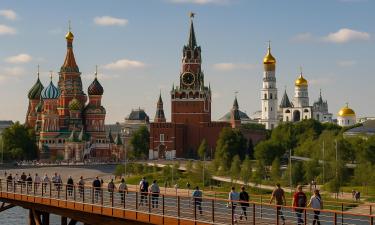Chinese village residents conduct merciless mutiny against local authorities
The village residents began blocking roads at the end of March
The rumors of stability in China proved to be slightly exaggerated. The residents of the village of Huankantou in Zhejiang province, in Eastern China, rose in rebellion against the local authorities on April 10th as thousands of Chinese people were rallying against the new history textbook published in Japan. The revolt was caused by unbearable living conditions of the residents following the construction of chemical plants in the village. The local bosses were the shareholders of those plants. 
The village residents began blocking roads at the end of March. The police arrived and started to disperse the crowd. Two elderly women are rumored to have been killed at that point. The crowd went amuck and lunged at the police. The demonstrators overturned the police vehicles and threw stones at the policemen. The police had to take shelter in a local school building. More than 50 police were wounded in the clashes, 5 of them are in a critical condition, according to Reuters that cited a local doctor. Some of the residents were wounded too.
A week after the bloody events shook the village, the situation still looks unclear and weird. The local authorities fled the village. The police can not be seen. The village residents believe that the police are afraid to meet with stubborn resistance one more time. The people do not look scared, they do not seem to expect reprisals. Instead, they are in a state of euphoria stemming from the victory over the authorities, The Guardian reported.
The village of Huankantou is located in a relatively well-off coastal province of Zhejiang. The population of the village is about 10,000 people. Now the village looks like an open-air museum. In terms of stability attributed to today's China, the picture is rather surrealistic. The kids stopped going to school since last Sunday. The checkpoints were erected outside the chemical plant. They are manned by local residents. The authorities did not cordon off the village after the events. Groups of “tourists” are walking about the village day and night. They are staring at the broken police vehicles and battered police helmets scattered around. The “rebels” are proudly recalling the moments of their “rebellion” using loudspeakers.
It has been a long time since the Chinese authorities had to tackle such an upheaval. Various sources say that up to 3,000 policemen tried to contain the huge crowd of peasants. The police were eventually forced to retreat.
The central media do not report on the events in Huankantou. It is probably far too busy with issues relating to anti-Japanese demonstrations. But the news is being spread far and wide by word of mouth. Thousands of “tourists” and well-wishers arrive daily in the village.
The killing of two women by the police reportedly sparked the disturbances. But no evidence has been found so far as to support the version. According to eyewitnesses, the chemical plant was picketed for two weeks. Nobody knows the names of alleged victims. Prior to going AWOL, the local authorities kept saying that nobody had been killed.
The local residents accuse the corrupt authorities of the “unauthorized” seizure of land for building chemical facilities. 13 chemical plants were built in the nearby area in 2002. Soon the water in a local river was polluted, the crops started to wither, and the people began to fall ill. The management of the plant promised to take care of the environment yet promises were made to be broken.
Neither local authorities nor the central government took any measures. The economic growth is of paramount importance in today's China. “We lost our faith in the authorities,” say the local residents. They also say that an “organizational committee” was set up to govern the village since all the local bosses ran away. But all the names of the committee members are kept in the dark.
The plans of the central government still remain to be seen. No arrests were reported so far. The official statistics show the steady rise of popular protests in China. According to official data, the number of protests increased by 15% last year. About 3 million people took part in some 58 thousand protests across the country. The roads in the capitals of some Chinese provinces are blocked at least once a week.
The events in Huankantou do not fit well in the statistic records. The disturbances should send another alarm signal to the central government. Last year tens of thousands of residents in another Chinese province clashed with the police while opposing the construction of a dam. In theory, China is ready to deal with a “revolution” painted any color. Besides, all the protests are still unfolding at a local scale. But Beijing authorities should be really worried by the fact that the people are now feel distrust not only about local officials that are corrupt in many cases anyway. The people are beginning to distrust the central government too.
The upheaval threw light on one more side of the Chinese “stability.” Environmentalists have been raising alarm in an attempt to bring attention to the catastrophic levels of industrial pollution in China. The pollution of environment is the dark side of China's high economic growth. It is going to turn into one of the major social problems. The government may have to take the consequences if economic growth remains a top priority.
Sergei Borisov
Subscribe to Pravda.Ru Telegram channel, Facebook, RSS!




